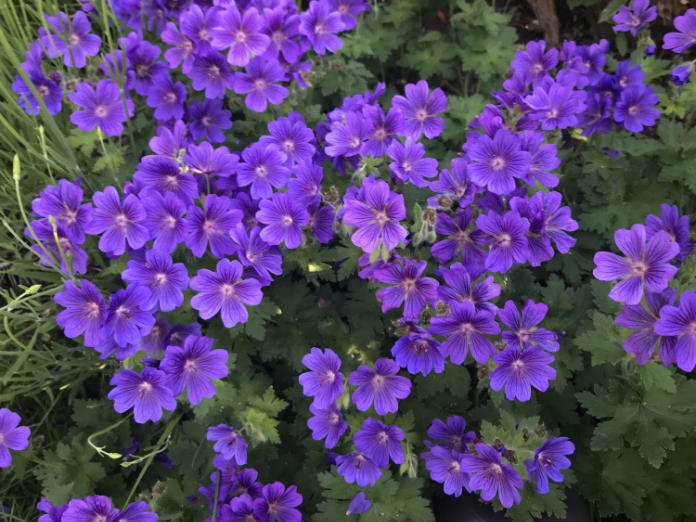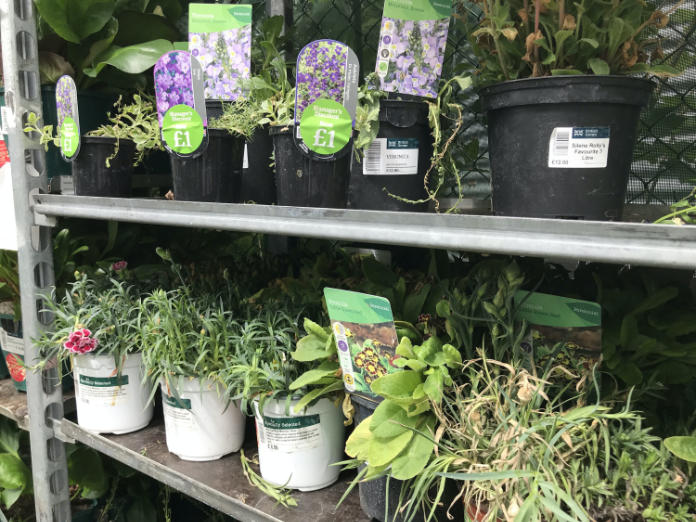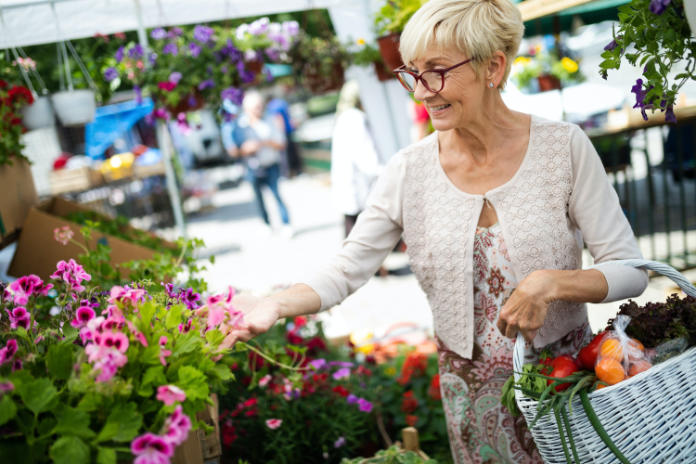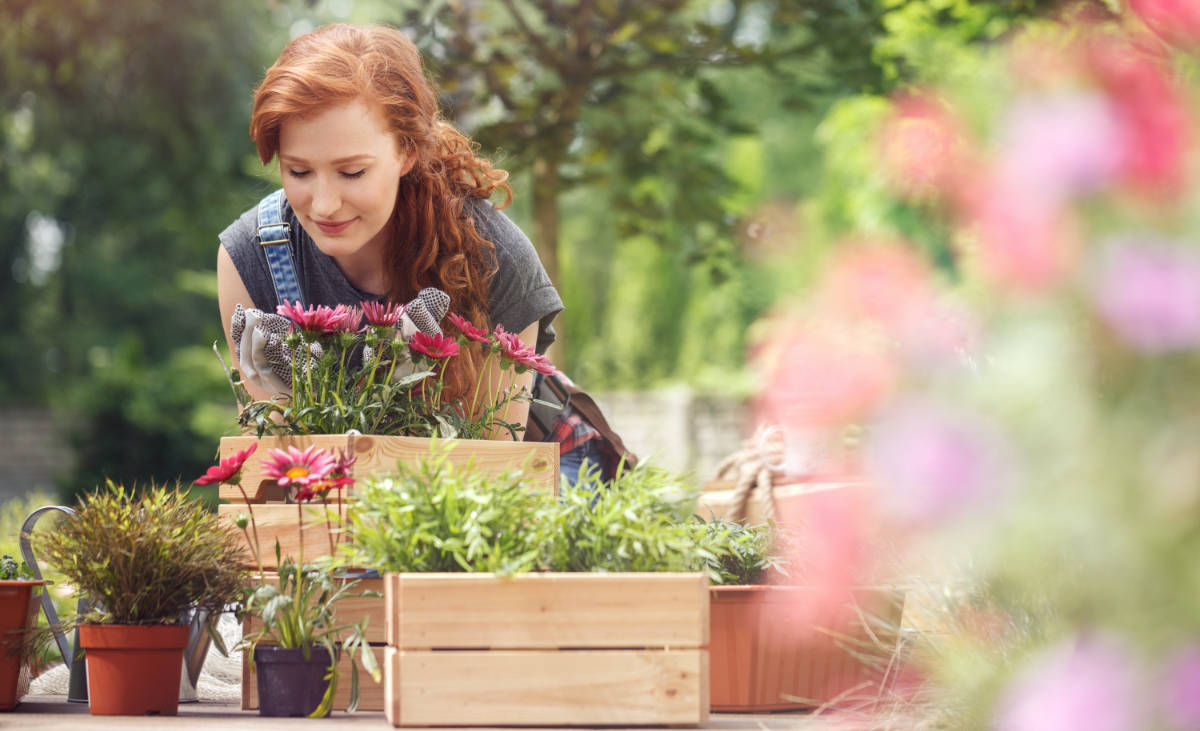Now summer’s almost here and garden centres are finally back open, many people will be rolling up their sleeves and getting stuck into their gardening. But with finances tight, gardening on a budget means you can get the garden you want without spending a fortune.
For green-fingered types decking out an outdoor space can be costly, particularly if it involves several trips down to the garden centre. Previous research from Lloyds Bank has found people spend an average of £170 on their gardens between April and September.
Of course, if you love your garden then this may be money well spent – but it’s always handy to consider ways to trim back and save some cash, and still have your garden brimming over with blooms.

If you’re worried that doing up your garden will cost a small fortune, we’ve enlisted some expert help: garden designer Mark Gregory, one of the judges on Channel 5’s The Great Gardening Challenge, who has also suggested some money-saving tips.
Gardening on a budget tips
We’ve put together a collection of tips for gardening on a budget that are designed to help you save money and still plant up a magnificent outdoor space.
1. Join a local garden club
This is a great way to get very cheap, or free plants. You could also pick up some tips from other members and find out from them which plants grow particularly well in your area.
2. Think small
Large plants can make an instant impact in the garden, but they can also be costly. You could save a lot of money by growing plants yourself from seed, or if that sounds too tricky some retailers will sell very young plants, which you can pot on at home until they’re big enough to be planted out. To boost your chances of successful growing to maturity, you’ll need to be prepared to give your young plants plenty of attention.

“If you are buying herbaceous plants, buy them in small pots,” he suggests. “Buying herbaceous plants in big pots is a complete waste of money. Buy plants like (cranesbill) geraniums and alchemillas – standard garden plants – in p9s (9cm) or 1 litre pots. There’s a school of thought that believes they will get established quicker.
“Shrubs and choice plants should be as big as you can afford, to make an impact, but your smaller infill plants don’t have to be.”
3. Divide plants
If your garden beds are looking a bit patchy, one great gardening on a budget tip is that you don’t necessarily need to head out to the garden centre to buy new plants. Try splitting some of the plants that are already growing there into smaller clumps and dotting them around to fill in any gaps in your planting. As well as multiplying the number of plants you have, it could encourage any tired-looking perennials to grow more vigorously, giving them a fresh lease of life.
Plants which grow in clumps and can potentially be divided include irises, bamboos ornamental grasses and anemones. To boost your chances of dividing plants successfully, the Royal Horticultural Society website suggests dividing plants when they’re not in active growth. For example, summer-flowering plants could be divided in spring or autumn. And make sure you keep your plants well watered.
“Digging up and dividing plants is a way of getting plants for free,” says Gregory. “In your own garden, plants can often be lifted and separated to double up the numbers. And if you have close family and friends, you can get plants from other sources as well.”
Plants which will grow relatively quickly and are easy to divide include alchemilla, astrantia, achillea and sedum.
4. Keep your black plastic pots and reuse them
Concern around the amount of stuff that gets thrown away – particularly plastics – has been growing in recent years. As many of the plants we buy come in black plastic pots, think about creative ways of reusing them for other purposes, whether it’s to pot on other plants, store garden tools in or to upcycle into something else.
5. Make your own compost
Just add vegetable peelings, soft hedge clippings, cut grass and old bedding plants and you’re good to go. Spring can be a good time to get started, as the warmer months help the compost rot down more quickly.
6. Save money on gardening tools
Look out on local community websites, as well as websites where people are giving away items for free. Family members may also have some old spades and gardening forks they no longer use. Older, well-loved tools could also help to give your garden a ‘rustic’ look.
7. Grow your own food
Whether your aiming for ‘best in show’ tomatoes or just planting some fresh herbs into pots or fruit and veg on your windowsill to throw into meals, growing plants for food can be a very tasty way to make savings.
8. Avoid false economies when buying ‘statement’ plants
If you’re buying a shrub or tree which you want to make the focal point of your garden, it may be worth travelling to buy it in person so that you can select the exact one you want and make sure it’s healthy. If it’s intended as a statement plant to add a wow factor to your garden for years to come, it may well be worth investing a bit more money, rather than going for a less expensive option but then regretting it.
9. Upcycle what’s already in your garden
Rather than splashing out on new garden furniture, try painting what you’ve already got in a fresh colour. Old, chipped clay pots can look attractive with masses of bright flowers brimming over the edges, or if pots are too broken to hold plants use the smashed pieces as drainage inside other pots.
Stripped down, bare and shabby chic is the look of the moment for younger couples, says Gregory. He suggests people scour landscape yards when gardening on a budget, or fish through old skips for ephemera, second hand furniture and paving which can be upcycled into the garden.
“You can buy second hand council paving slabs and do something sexy with that. You can do things in a creative way very cheaply. You have to do the legwork, but with social media and the internet, the world has become an incredibly easy place to source things.”
Recommended: Top garden makeover tips to do up your garden.
10. Don’t plant in winter
“Either plant late summer or spring, after the bad weather, when the plants have more chance of becoming established. You have more chance of losing plants to bad weather if you plant in November or December, when you get more frosts. If you are going to buy small, herbaceous plants, you will save money like that.”
11. Check out sale plants

“There’s nothing wrong with sale plants,” Gregory notes. “Also, go to car boot sales to look for bargains.” Many perennials in garden centres will have gone over and may look a little bedraggled, which is why they are in the sale, but they will come back next year.
12. Don’t impulse-buy

“Avoid being seduced at the point of sale in garden centres, because garden centres get plants in which look great and then people impulse-buy. The result is that their garden becomes diluted by impulse buys which may not match the style of the garden or the plants they already have.
“Consider the look that you want and consider the plan. Make a list before you go and stick to it. Don’t put odd bits and pieces here and there because all you get is a blancmange of a garden.”
13. Plant more than one at a time
“A lot of people will plant one of this and one of that, which will create a weak, watered-down effect. Planting works best in multiples. I’d be planting in threes, fives, sevens, nines, twelves, to get something going.
“Get into the mindset that it’s better to plant smaller, but more of them,” Gregory explains. “Always think about repeat planting. If you have a border on the right hand side, repeat it on the left, but maybe in a smaller quantity, so the planting flows from one border to another. You can do that with plants which you’ve divided.
“I’ve seen planting done on a huge scale but only using 13 species, but because they repeat them you get a rhythm going and from a design point of view it works a lot better.”
14. Stick to the rule of right plant, right place
It’s no use buying a beautiful plant which requires full sun and light soil, if you are intending on planting it in clay soil in shade.
“A lot of wasted money is used in impulse buying, where people like the look of it in the shop, don’t read the plant label and then put it where it doesn’t want to be,” says Gregory.
15. Finally, look after your plants
Many plants fail due to being watered too much or not enough. So try to get the balance right and make giving them regular care part of your routine. Plants in pots will particularly need your attention. If you cherish your plants, you’re less likely to need to spend money on replacements – a valuable gardening on a budget approach.
Why you don’t need to be an ‘expert’ to start gardening































































